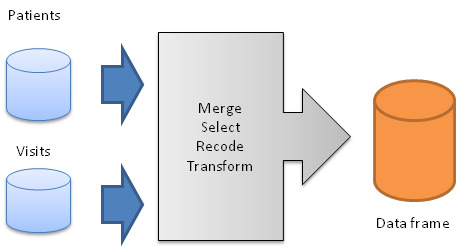Gerenciamento de dados em R

Depois de ter acesso aos seus dados, você vai querer transformá-los em um formato útil. Isso inclui a criação de novas variáveis (incluindo recodificação e renomeação de variáveis existentes), classificação e fusão de conjuntos de dados, agregação de dados, reformulação de dados e subconjuntos de dados (incluindo a seleção de observações que atendam aos critérios, amostragem aleatória de observações e eliminação ou manutenção de variáveis).
Cada uma dessas atividades geralmente envolve o uso de operadores internos do R (aritméticos e lógicos) e funções (numéricas, de caracteres e estatísticas). Além disso, talvez você precise usar estruturas de controle (if-then, for, while, switch) em seus programas e/ou criar suas próprias funções. Por fim, talvez você precise converter variáveis ou conjuntos de dados de um tipo para outro (por exemplo, numérico para caractere ou matriz para quadro de dados).
Esta seção descreve cada tarefa de uma perspectiva do R.
Para praticar
Para praticar o gerenciamento de dados no R, experimente o primeiro capítulo deste curso interativo.